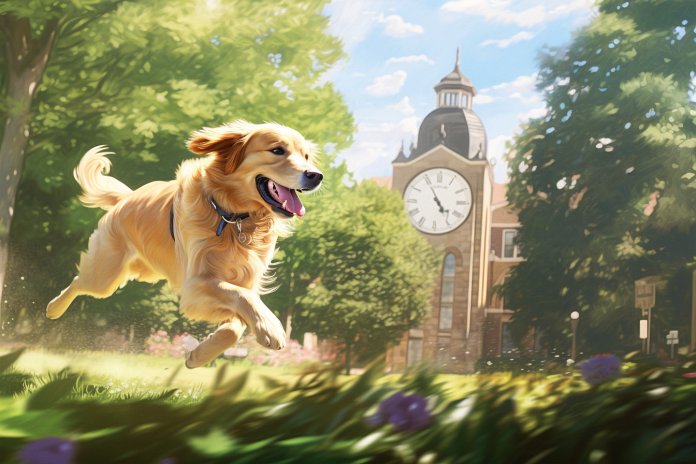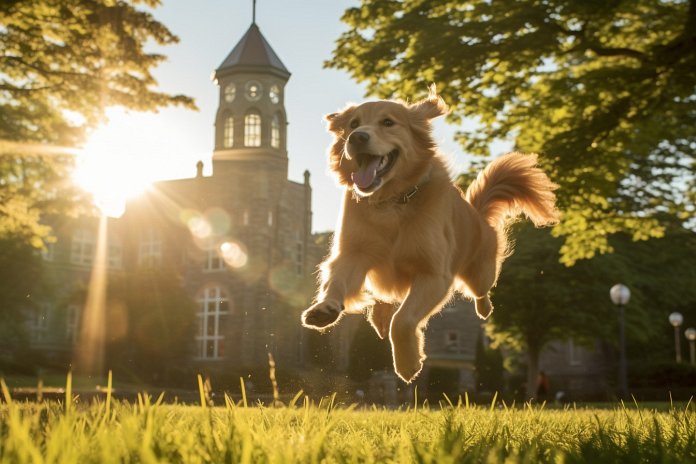
Leaving our dogs alone all day can make us feel guilty, as we wonder if they miss us while we’re gone. Research shows that dogs do miss us and become happier the longer we’re away. But do dogs have a sense of time? This article explores whether dogs can sense time, how they do it, and how we can help them cope with our absence.
Signs Your Dog Can Sense Time
Like humans, dogs have a circadian rhythm or internal clock that regulates their behavior over a 24-hour cycle. They are also sensitive to changes in their environment, such as temperature and social cues. While dogs and humans have different habits, dogs can adapt their sleep patterns and are always ready to eat. They may even understand our routines better than we do. Signs that your dog can sense time include alertness, head tilting, listening, wagging tail, and other behaviors like waking you up for food or walks, waiting at the window or door, and seeking attention through licking.
The Science Behind Dogs Sensing Time
Humans have episodic memory, which allows us to remember past events and anticipate future ones. Dogs have a different version of this memory, which enables them to recognize past events and anticipate future events based on those memories. However, dogs can only gauge the amount of time that has passed since an event occurred, rather than conceptualize time like humans can. Studies also suggest that dogs recognize changes in behavior when left alone for different lengths of time, becoming more affectionate the longer they’re separated from their humans.
Helping Your Dog Cope with Your Absence
While most dogs can cope with our absence by sleeping, some may experience separation anxiety. To help them, consider leaving them in a crate or small room where they feel safe and secure. Pay attention to their behavior before leaving to see if they calm down or become more anxious in the confined space. Leaving behind an article of your recently worn clothing can comfort them and remind them of your presence. Providing toys as a distraction can also make the time go by faster for them.
“Time may be a human construct, but our dogs have a natural sense of its passing.”

Tips & Things to Know
1️⃣ Dogs can sense time: Dogs have their own internal clock, known as a circadian rhythm, which allows them to recognize changes in their environment and anticipate future events. They may exhibit signs such as alertness, head tilting, and tail wagging to indicate that they are aware of the passage of time.
2️⃣ Look for signs of recognition: Dogs may exhibit certain behaviors that indicate they understand your routines and can anticipate events. These signs can include waking you up for food or walks, waiting at the window or door for your return, and seeking attention through licking.
3️⃣ Help your dog cope with your absence: If your dog experiences separation anxiety, there are strategies you can use to help them feel more comfortable. Consider leaving them in a crate or a small room where they feel safe and secure. Leaving behind an article of clothing with your scent or providing toys for distraction can also help alleviate their anxiety while you are away.
Frequently Asked Questions, Answered ✅
1. Can dogs sense the passage of time?
– Yes, studies have shown that dogs can sense the passage of time.
2. How do dogs sense time?
– Dogs have an internal clock, known as a circadian rhythm, which helps them monitor physical and behavioral changes over a 24-hour cycle.
3. What are some signs that dogs can sense what time it is?
– Signs that dogs can sense what time it is include alertness, head tilting, listening, wagging their tail, and other behaviors such as waking you up for food or walks, waiting at the window or door, and licking for attention.
4. Do dogs have episodic memories like humans?
– Dogs have their own version of episodic memories, which enable them to recognize past events and anticipate future events based on past experiences. However, their ability to conceptualize time is more limited than humans.
5. How can I help my dog cope with my absence?
– If your dog experiences separation anxiety, you can try leaving them in a crate or a small room where they feel safe and comfortable. Leaving behind an article of recently worn clothing and providing toys as distractions can also help alleviate their anxiety.